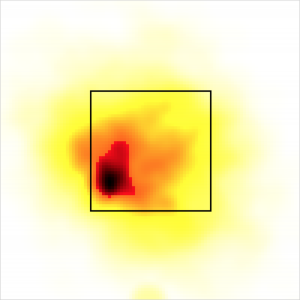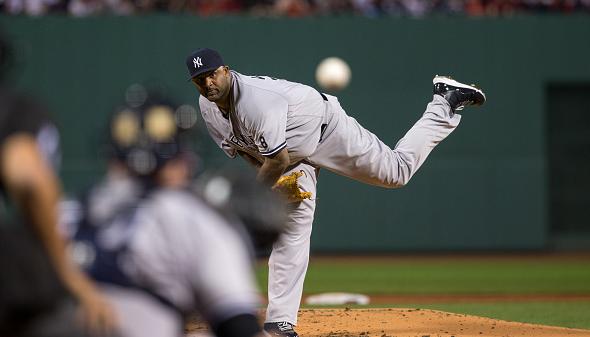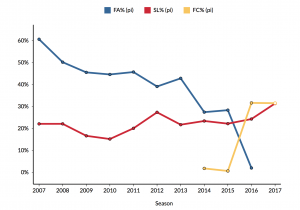Every year in the Bronx the expectation is World Series or bust. That is no different in 2018, and perhaps even more magnified after “the little engine that could” made it to Game 7 of the ALCS last year and added reigning NL MVP Giancarlo Stanton.
The last time the Yankees won the World Series was of course back in 2009. The only members of that team who remain are Brett Gardner, David Robertson, and CC Sabathia. That team had high expectations as well after bringing in free agents Mark Teixeira and A.J. Burnett alongside Sabathia. However, the structures of these two teams are considerably different.
Sabathia specifically has been one who has certainly evolved into a completely contrasting type of pitcher. Once a power-arm who was capable of blowing away hitters with an upper-90s fastball, he has now become more of a finesse pitcher, relying heavily on his location and changing speeds due to a natural drop in velocity.
Here’s a look at some of the differences in Sabathia’s pitching style from 2009 to 2017:
Pitch Type
As you may have noticed, the data point for 2017 is missing. In fact, by FanGraphs’ classification, Sabathia did not even throw a fastball last season – the pitches he threw the most were his cutter (728 pitches) and his slider (725 pitches). Contrasting his 2009 and 2016 (most recent fastball data) seasons, his fastball usage fell from 46% to 2%. He didn’t even start throwing a cutter until 2014, the year his ERA peaked at 5.28. Much of this change can be attributed to his work with Core Four member Andy Pettitte, notorious for his cutter.
Location, Location, Location


The above heat maps (pitcher’s view) showcase all of Sabathia’s pitches in 2009 (left) and 2017 (right). It can clearly be seen that he now works much more out of the middle of the zone and towards the lower half.
Other Stats
|
– |
ERA | K/9 | BB/9 |
Hard Hit % |
Soft Hit % | Ground Ball % | Fly Ball % | HR/Fly Ball % |
|
2009 |
3.37 |
7.7 | 2.6 | 23% | 19% | 43% | 37% |
7% |
| 2017 | 3.69 | 7.3 | 3.0 | 27% | 24% | 50% | 28% |
17% |
These numbers show that even though Sabathia is not throwing as hard as he once did, his K/9 is fairly nearly the same. The thing that has changed has been that he has induced more soft contact. He also has become more of a ground ball pitcher. The stat that jumped from 2009 to 2017 is his HR/FB %, which has more than doubled. This means that more of the fly balls he is allowing now are going out of the park. However, as aforementioned, he is pitching more in the lower half of the zone and generating more ground balls, which has allowed him to remain successful even with an increased HR/FB %.
All in all, after a rough 2014 season, Sabathia has been able to truly transform his pitching style after his drop in velocity: he averaged 95.1 MPH on his fastball in 2009 compared to only 90.1 MPH on his cutter in 2017. And with that, he has not only been able to become the veteran leader of the rotation, but he has remained a key component of it as well.





